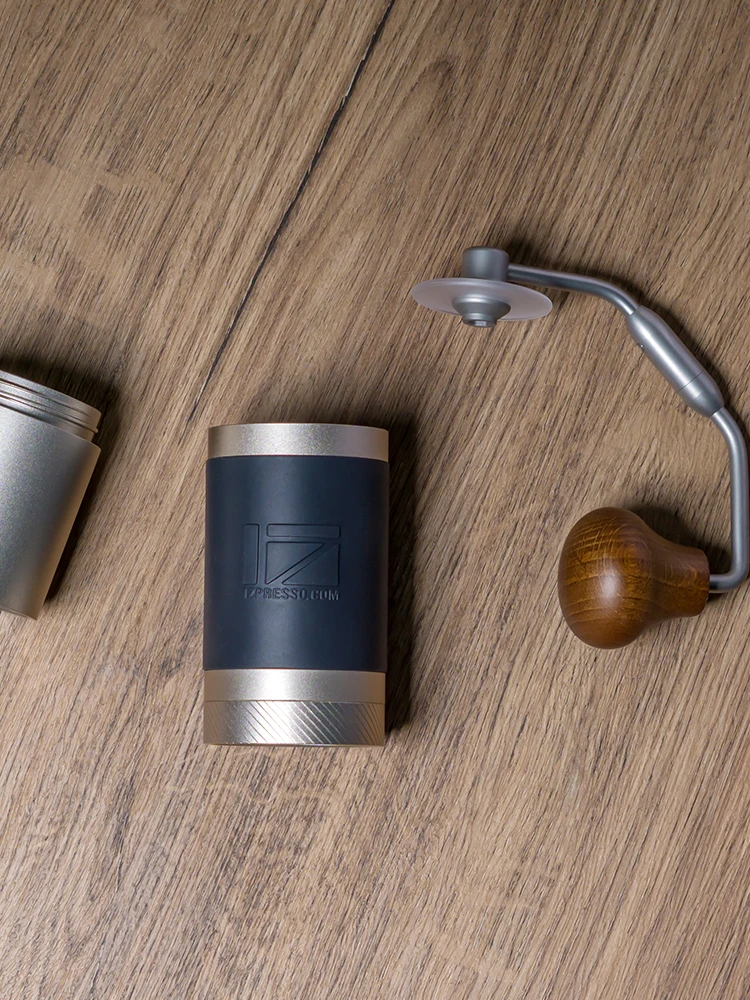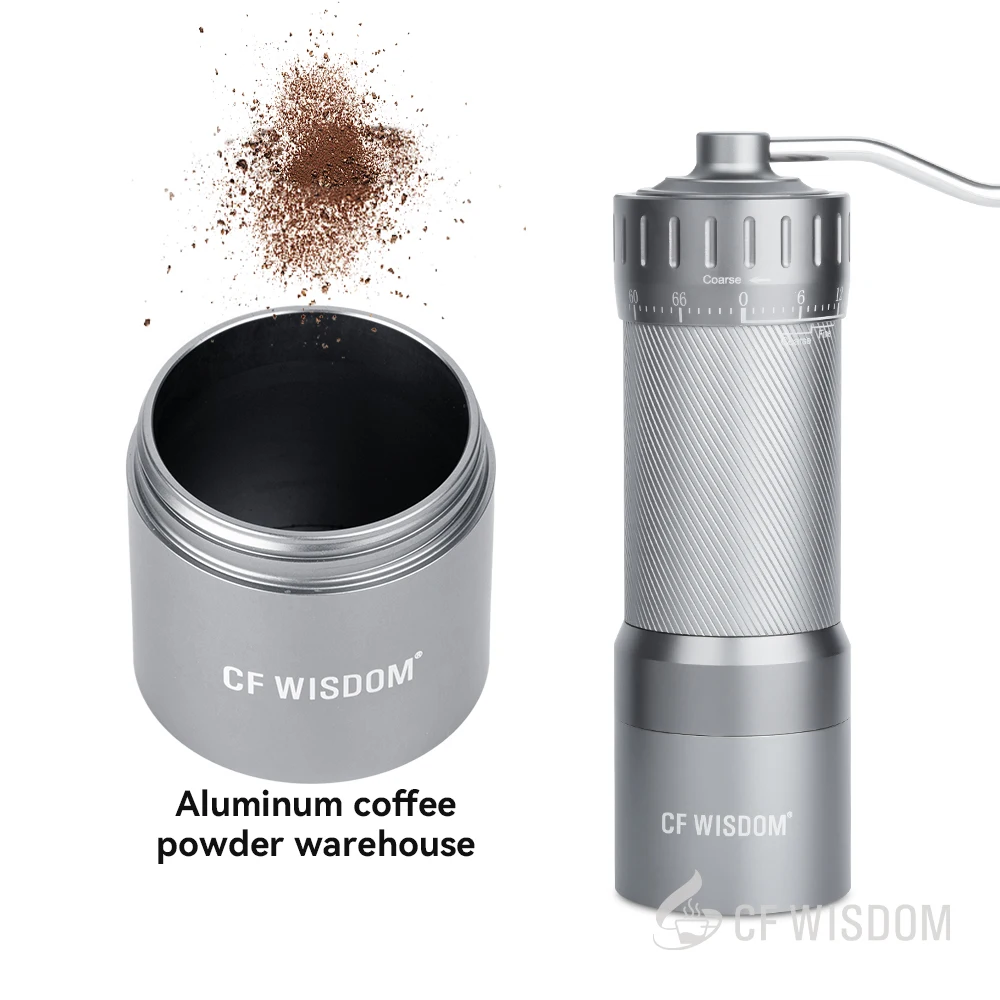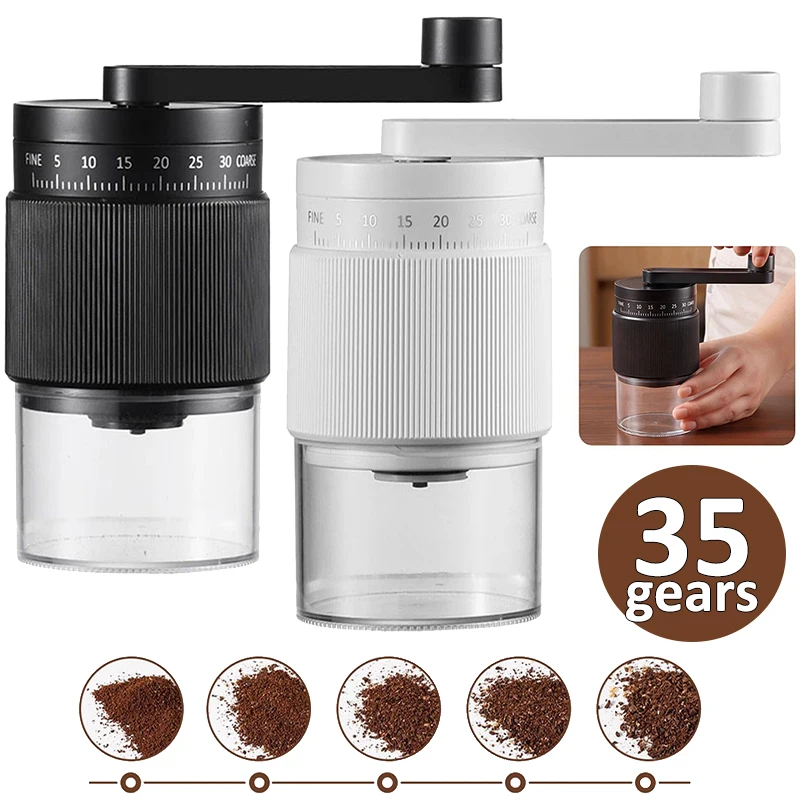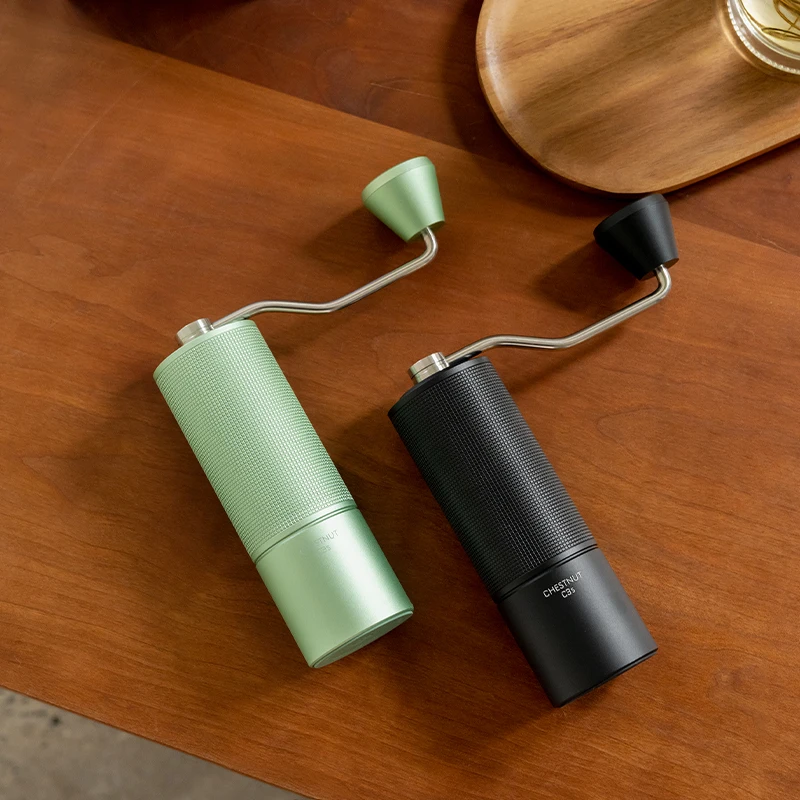Introduction: Understanding Coffee Grinder Maintenance
A quality hand coffee grinder is an investment that can transform your daily brewing ritual. Like any precision tool, proper maintenance ensures optimal performance, consistent grind quality, and a longer lifespan for your equipment. One question that frequently comes up among coffee enthusiasts is whether they should lubricate their grinder burrs.
This common question typically arises when users experience:
– Difficulty turning the handle
– Unusual resistance during grinding
– Inconsistent grind results
– Strange noises during operation
Many coffee lovers assume that adding lubricant to their grinder burrs will solve these issues. However, the reality is more nuanced than you might expect.
Studies show that well-maintained coffee grinders can last 5-10 years longer than neglected ones, making proper care essential for protecting your investment. Understanding the basics of maintaining manual coffee grinders is crucial for anyone serious about their coffee quality.
In this comprehensive guide, we’ll explore the truth about coffee grinder burr lubrication, proper cleaning techniques, and when selective lubrication is actually appropriate. We’ll also provide a maintenance schedule to keep your grinder performing at its peak. The correct approach to maintenance doesn’t just extend the life of your equipment—it directly affects the flavor in your cup each morning.
Whether you’re experiencing issues with your grinder or simply want to ensure you’re providing the proper care, understanding coffee grinder maintenance requirements will help you make informed decisions about your equipment care routine.
The Truth About Lubricating Coffee Grinder Burrs
Here’s the straightforward truth that many coffee enthusiasts don’t realize: Coffee grinder burrs generally should NOT be directly lubricated with any external product.
This might seem counterintuitive, especially if you’re experiencing difficulty turning your grinder. However, there’s an elegant natural solution already at work in your grinder. Coffee beans themselves contain natural oils that, over time, create a thin protective coating on your burrs—a process often called “seasoning.” This natural coffee oil provides all the lubrication your burrs need for optimal grinding performance.
Why External Lubrication Is Problematic
Adding external lubricants to your coffee grinder burrs can create several serious issues:
- Taste contamination: Even food-grade lubricants can alter the flavor of your coffee, potentially ruining your brewing experience
- Health concerns: Non-food-grade lubricants pose safety risks if they contaminate your coffee
- Performance degradation: Lubricants attract and bind with coffee particles, creating a sticky, gummy residue that actually increases grinding resistance
- Rancidity issues: Over time, applied oils can become rancid, creating off-flavors in your coffee
- Accelerated wear: Improper lubrication can actually accelerate wear on precision parts
Well-seasoned burrs develop a natural patina from coffee oils that protects the metal while allowing for smooth operation. This is why many manual coffee burr grinders actually improve in performance after the initial break-in period, once they’ve been “seasoned” with natural coffee oils.
Understanding this fundamental aspect of grinder maintenance helps prevent common mistakes that can damage your equipment and compromise your coffee quality.
Identifying Common Hand Grinder Issues: Beyond Lubrication
When a hand grinder becomes difficult to use, many coffee lovers immediately assume lubrication is the solution. However, most hand grinder issues stem from different causes entirely. Recognizing the true source of problems allows for appropriate remedies that won’t potentially damage your equipment.
Common Symptoms and Their Actual Causes
Grinding Resistance and Stiffness:
– Coffee oils and fine particles building up between burrs
– Trapped coffee grounds in the grinding mechanism
– Overtightened adjustment settings
– Normal break-in period with new burrs
Inconsistent Grind Size:
– Coffee particle buildup affecting burr alignment
– Loose components due to vibration over time
– Improper reassembly after cleaning
– Actual burr wear (usually after years of heavy use)
Unusual Noises During Operation:
– Foreign objects (small stones) trapped between burrs
– Misaligned components after cleaning
– Loose fasteners or parts
– Excessive coffee particle accumulation
Slower Grinding Times:
– Dull burrs needing replacement
– Excessive fine particle buildup
– Overly ambitious grind setting for bean hardness
– Attempting to grind too many beans at once
These issues are frequently misdiagnosed as “needing lubrication” when the actual solution is proper cleaning and maintenance. Understanding the various factors affecting grind consistency helps identify the true source of problems and apply appropriate solutions.
One user reported spending months trying different lubricants on burrs that continued to bind, only to discover that thorough cleaning immediately resolved the issue. The coffee oils and fine particles had created a sticky paste between the burrs—adding lubricant was actually making the situation worse by attracting more particles.
Essential Cleaning: The Primary Solution for Most Grinder Issues

Regular cleaning is the single most effective maintenance activity for preserving your hand coffee grinder’s performance. Most issues that users attribute to “needing lubrication” are actually solved through proper cleaning, which removes coffee oil buildup, trapped particles, and residue that cause grinding resistance.
Complete Cleaning Procedure
Safety First:
1. Take a photo before disassembly to reference during reassembly
2. Work over a light-colored towel to prevent losing small parts
3. Consult your grinder’s manual for model-specific instructions
Disassembly Process:
1. Remove the handle and any outer components
2. Carefully unscrew or unlock the adjustment mechanism
3. Separate the burr set, noting proper orientation
4. Remove any additional components according to manufacturer instructions
5. Keep all parts organized in the order of removal
Cleaning the Components:
1. Use a soft brush (old toothbrush or dedicated coffee brush) to remove loose particles
2. Clean burrs thoroughly, focusing on the teeth and grinding surfaces
3. Wipe down the grinding chamber and collection bin
4. Clean threads on adjustment mechanisms with a brush
5. For stubborn buildup, use a dry toothpick for crevices
6. For persistent residue, use a cloth very lightly dampened with water (no soaking!)
Drying and Reassembly:
1. Ensure all parts are completely dry before reassembly
2. Follow your disassembly photos in reverse order
3. Check alignment of burrs during reassembly
4. Test adjustment mechanism through its full range
5. Verify all components are secure
Understanding the proper manual burr coffee grinder cleaning techniques ensures you’re addressing the root cause of most performance issues.
Cleaning Frequency Guidelines
- Light users (1-2 cups daily): Deep clean monthly
- Average users (3-5 cups daily): Deep clean every 2-3 weeks
- Heavy users (multiple brews daily): Deep clean weekly
- All users: Quick brush of burrs after each use prevents buildup
For extremely stubborn buildup, specialized coffee grinder cleaning products like Urnex Grindz can help remove oils and residue without damaging components. Following essential steps for deep cleaning your hand grinder will resolve the vast majority of performance issues without introducing potentially problematic lubricants.
Strategic Lubrication: When and Where It IS Appropriate
While the burrs themselves should not be lubricated, certain mechanical components of your hand grinder can benefit from strategic, minimal lubrication. Understanding where, when, and how to apply food-safe lubricants properly can improve your grinder’s performance and longevity.
Components That May Benefit From Lubrication
| Component | Lubrication Needs | Application Frequency |
|---|---|---|
| Adjustment threads | Light application | Every 3-6 months |
| Central shaft/bearings | Minimal application | Every 6-12 months |
| Assembly threads | Very light application | After deep cleaning |
| External moving parts | As needed | When stiff or squeaking |
Food-Grade Lubricant Options
When lubricating any part of a coffee grinder, the lubricant must be food-grade. Suitable options include:
- Food-grade silicone grease (preferred for most applications)
- Food-grade mineral oil (for threads and external components)
- Specialized coffee equipment lubricants like Kluberpaste UH1 84-201
- Food-safe PTFE-based lubricants (for bearings and moving parts)
Proper Application Technique
- Clean and completely dry the component before lubrication
- Apply an extremely small amount—less is more
- Use a toothpick or cotton swab for precise application
- Wipe away any excess lubricant completely
- Work the mechanism to distribute the lubricant evenly
- Remove any visible lubricant before reassembly
What To Avoid
- Never use cooking oils (olive, vegetable, etc.) as they become rancid
- Avoid household lubricants like WD-40, which are not food-safe
- Don’t apply lubricant to any surface that contacts coffee beans or grounds
- Steer clear of petroleum-based products not rated for food contact
Many hand burr grinder users find that proper cleaning combined with minimal, strategic lubrication of only the mechanical components (not burrs) significantly improves grinder operation and extends equipment life.
Manufacturer-Specific Guidance: Different Approaches for Different Grinders

Coffee grinder designs vary significantly between manufacturers, and maintenance approaches should be tailored accordingly. Consulting your specific grinder’s manual provides the most accurate guidance, as what works for one design might damage another.
How Maintenance Varies By Grinder Type
Ceramic vs. Steel Burrs:
– Ceramic burrs require gentler handling during cleaning to prevent chipping
– Steel burrs can handle more vigorous cleaning but may be more susceptible to rust if not dried properly
– Ceramic burrs typically need less “seasoning” time than steel burrs
– Steel burrs may benefit more from the natural oils in coffee beans
Construction Materials:
– Plastic bodies require gentler cleaning agents to prevent degradation
– Metal components may need additional attention to prevent oxidation
– Glass components need careful handling during disassembly and cleaning
– Wood components typically should not be exposed to water or cleaning solutions
Budget vs. Premium Models:
– Premium models often feature more precision components requiring careful maintenance
– Budget models may have simpler designs that are easier to clean but may wear faster
– Higher-end models typically provide more comprehensive maintenance instructions
– Premium models often use specialized materials with specific care requirements
Ceramic burr coffee grinders tend to have different cleaning requirements than their steel counterparts. Ceramic is more brittle and can chip if cleaned too aggressively, while steel burrs are more durable during cleaning but may develop surface rust if not dried thoroughly.
If you’ve lost your original manual, most manufacturers maintain digital copies on their websites. Alternatively, coffee enthusiast forums often have user-created maintenance guides for popular grinder models that can supplement official documentation.
Creating a Maintenance Schedule: Keeping Your Grinder in Peak Condition
Establishing a regular maintenance schedule prevents performance issues and extends your grinder’s lifespan. The ideal schedule varies based on your usage patterns and the types of coffee you grind, but following these guidelines will help maintain optimal performance.
Sample Maintenance Schedule
| Frequency | Maintenance Task | Details |
|---|---|---|
| After each use | Quick clean | Brush loose grounds from burrs and catching bin |
| Weekly | Basic cleaning | Wipe surfaces, remove visible residue |
| Monthly | Deep cleaning | Full disassembly, thorough cleaning of all parts |
| Quarterly | Inspection & lubrication | Check for wear, lubricate mechanical parts if needed |
| Annually | Comprehensive service | Deep clean, inspect burrs for wear, check all components |
Adjusting Your Schedule
For Darker Roasts: More frequent cleaning (increase by 25-50%) due to higher oil content
For Espresso Grinding: More frequent deep cleaning due to finer particles and increased pressure
For Travel Use: Additional inspection after transport to check for misalignment
For Seasonal Changes: More frequent checks during humid seasons to prevent moisture issues
Maximizing the lifespan of your manual coffee grinder depends on consistent maintenance tailored to your specific usage patterns. The most important factor is establishing a regular cleaning routine rather than waiting until performance issues arise.
Signs that your maintenance schedule needs adjustment include:
– Increasing difficulty turning the handle
– Visible coffee buildup between cleanings
– Inconsistent grind results
– Unusual noises during operation
– Sticking or binding of adjustment mechanisms
Troubleshooting: When Cleaning and Lubrication Don’t Solve the Problem
Sometimes, even after thorough cleaning and appropriate lubrication of mechanical parts, issues may persist with your hand grinder. These problems typically indicate mechanical issues requiring additional attention.
Common Persistent Issues and Solutions
Q: My grinder still feels extremely stiff after cleaning. What’s wrong?
A: Check for burr alignment issues. The central shaft may be bent or the burrs might be misaligned during reassembly. Carefully disassemble again and ensure all components are properly seated and aligned.
Q: I’m getting inconsistent grind sizes even after thorough cleaning.
A: This could indicate burr wear or damage. Examine your burrs under strong light for chips, uneven wear patterns, or damage. Burrs typically need replacement after grinding 500-1000 pounds of coffee, depending on quality.
Q: My grinder makes a scraping or metallic sound during operation.
A: This likely indicates misalignment or a foreign object. Disassemble completely and inspect for tiny stones or metal fragments that may have been in your beans. Check that the burr carrier is properly seated.
Q: The adjustment mechanism won’t stay in position.
A: The retention system (often a spring or washer) may be damaged or incorrectly installed. Alternatively, threads may be worn or damaged, requiring part replacement.
Q: My burrs appear to have rust spots.
A: Surface oxidation can occur if components weren’t completely dried after cleaning. Light surface rust can be removed with a soft brush, but significant rust may require burr replacement.
Precision manual grinders have tighter tolerances and may show issues more readily when components are slightly misaligned. When troubleshooting becomes necessary, refer to manufacturer resources for guidance on replacement parts or specialized service options.
For persistent issues, contact the manufacturer directly, as many quality grinder brands offer excellent customer support and repair services that can address problems beyond basic maintenance solutions.
Frequently Asked Questions About Hand Coffee Grinder Maintenance

Can I use cooking oils to lubricate my grinder?
No, cooking oils (olive, vegetable, coconut, etc.) should never be used to lubricate any part of your coffee grinder. These oils become rancid over time, creating unpleasant flavors and potentially harmful compounds. They also attract coffee particles and create sticky residue that makes grinding more difficult. Always use food-grade lubricants specifically designed for mechanical applications.
How do I know if my burrs are worn out and need replacement?
Signs of burr wear include noticeably inconsistent grind size, increased grinding time, unusually loud operation, and visible damage to the cutting surfaces. Examine your burrs under good lighting—worn burrs will show rounded edges rather than sharp cutting surfaces. Most quality burrs last for grinding 500-1000 pounds of coffee before requiring replacement.
Is it normal for new grinders to feel stiff at first?
Yes, many new hand grinders require a “break-in” period of 1-2 pounds of coffee before reaching optimal performance. New burrs have microscopic manufacturing artifacts that smooth out with use, and mechanical parts need time to “settle” into their optimal positions. During this period, the grinder may feel stiff but should gradually become smoother with regular use.
Can I wash my hand grinder components with soap and water?
Most metal components can be briefly cleaned with mild soap and water if absolutely necessary, but must be thoroughly dried immediately to prevent oxidation. Ceramic burrs can typically handle water contact better than steel. However, dry cleaning methods (brushes, cloth) are generally preferred. Never submerge wooden components or bearings in water. Always check your specific manufacturer’s guidelines.
What are signs that I need to clean my grinder more frequently?
Increasing resistance when grinding, visible oil buildup on components, inconsistent grind sizes, and coffee grounds sticking to the burrs rather than flowing freely through the grinder all indicate that your cleaning schedule needs adjustment. Coffee with higher oil content (typically darker roasts) requires more frequent cleaning.
Are ceramic burrs maintained differently than steel burrs?
Yes, ceramic versus steel grinder burrs have different maintenance needs. Ceramic burrs are more brittle and should be cleaned with softer brushes to prevent chipping. They’re immune to oxidation but can crack if dropped. Steel burrs can handle more vigorous cleaning but must be thoroughly dried to prevent rust. Ceramic burrs also tend to need less “seasoning” than steel burrs to reach optimal performance.
Fine Adjustment Hand Grinder, Precision Manual Grinder, Travel Coffee Grinder
Price range: $185.11 through $494.63 Select options This product has multiple variants. The options may be chosen on the product pageHand Burr Grinder, Hand Crank Coffee Grinder, Manual Espresso Grinder, Portable Coffee Grinder
Price range: $262.72 through $300.22 Select options This product has multiple variants. The options may be chosen on the product pageManual Burr Mill, Manual Coffee Grinder Stainless Steel, Manual Coffee Mill Grinder, Mechanical Coffee Grinder
Price range: $127.26 through $130.32 Select options This product has multiple variants. The options may be chosen on the product pageHand Burr Grinder, Manual Coffee Grinder Stainless Steel, Precision Manual Grinder
Price range: $183.64 through $187.52 Select options This product has multiple variants. The options may be chosen on the product page
Conclusion: The Key to Long-Lasting Hand Grinder Performance
Understanding the proper approach to coffee grinder maintenance—cleaning thoroughly and lubricating selectively—is essential for anyone who values quality coffee and wishes to protect their equipment investment. The key takeaways from this guide emphasize that:
- Coffee grinder burrs should not be directly lubricated—they receive natural lubrication from coffee oils
- Most hand grinder issues are solved through proper, regular cleaning
- Only specific mechanical components benefit from minimal food-grade lubrication
- Consistent maintenance prevents most problems before they develop
Implementing a regular maintenance routine based on your specific usage patterns will ensure your grinder delivers consistent performance for years to come. This approach not only extends your grinder’s lifespan but also maintains the quality of your daily brew—ultimately, the true measure of any coffee equipment’s value.
Quality manual coffee grinders made of stainless steel and other premium materials represent a significant investment in your coffee journey. With proper care, these precision tools can provide a decade or more of reliable service, making the small time investment in maintenance well worth the effort.
By following the guidance in this article, you’ll avoid common maintenance mistakes and enjoy the full potential of your hand grinder with every cup.







